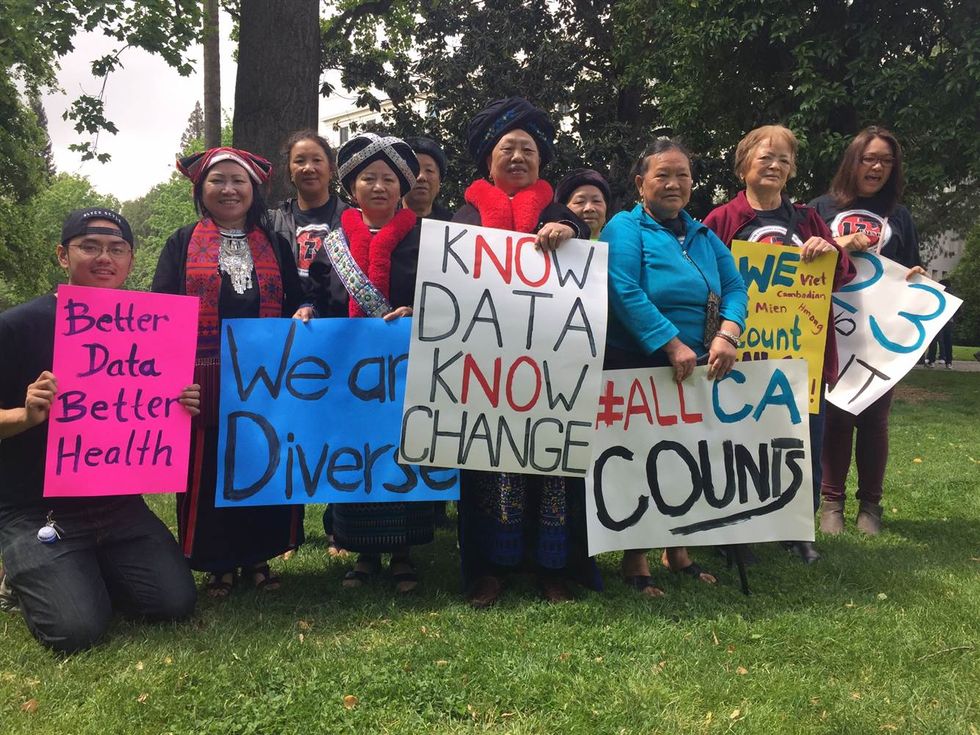This is part two of an ongoing series of California Assembly Bill 1726. Here's part one.
AB-176
AB-176 hoped to add to the Californian government agency list in favor of data disaggregation. Before AB-176, API data collected by any state-run agency was divided into seven broad categories, much like the United States Census: white, black or African American, American Indian and Alaska Native, Hispanic or Latino, Two or more races, Native Hawaiian and Other Pacific Islander and Asian. AB-176 would have required the California Department of Public Health (CDPH), the California Department of Health Care Services (DHCS), the University of California (UC) system, the California State University (CSU) system and the California community college system to collect an extended amount API of categories based on ethnicity. Such a broad extension of categories hoped to help sift through the data under the broad categories of “Asian” and “Native Hawaiian and other Pacific Islander.” The bill would also have added several new ethnic groups to the Pacific Islander and Native Hawaiian category.
On January 26, 2015, Bonta introduced AB-176 on the Assembly floor with coauthors and fellow Assemblymembers David Chiu, a Democrat representing the 17th district; Lorena Gonzalez, a Democrat representing the 80th district; Tony Thurmond, a Democrat representing the 15th district; California Senator Ricardo Lara, a Democrat representing the 33rd district and Richard Pan, a Democrat representing the 6th district. Bonta took to the Capitol to publicly introduce the bill in an official statement. Members of the Asian Pacific Islander Caucus stood behind him as he spoke. He was flanked by Chair of the California Legislative Black Caucus, Assemblyperson Reginald Jones-Sawyer, highlighting a diverse coalition behind the bill.
“The population of California is uniquely diverse, especially within the API community. There’s no place on the planet like it,” Bonta said. “It’s important that our policy leaders understand this diversity and are sensitive to the fact that APIs are not all the same. While we share some of the same challenges, such as language access issues, racial discrimination and obstacles born of immigration, each of our diverse communities has different social, economic and educational outcomes that need to be addressed appropriately.”
The official recording of his statement saw Bonta surrounded by dozens of API citizens, many carrying signs in support of the bill. Men and women, young and old, stood stoic as Bonta spoke of the need for the bill. Children carried signs pleading for data disaggregation -- a word seemingly too far out of their vocabulary. A few wore traditional Hmong garb. Within the faces of the crowd, one could tell just how diverse the API community in California was – seemingly defying the catch-all terms of Asian American or Pacific Islander.
“While all of us as part of the API share common goals and struggles, our struggles and challenges are simply not always the same,” Bonta stated. “The API community is not a monolith. Each of our diverse communities has different social, economic and educational challenges and outcomes that need to be addressed differently.”
The bill met its first committee assignment on April 7, 2015 when it was heard by the Assembly Committee on Higher Education. It then met the Assembly Committee on Health (of which Bonta was then chair), and then four more committees in the Assembly and State Senate before coming to the floor for a vote. The bill passed both chambers unanimously in the Senate and with only one opposed in the Assembly. It was then on its way to Governor Jerry Brown’s office to be signed. Brown had already signed AB-1088 in 2011, introduced by Assemblymember Mike Eng, a Democrat from the 49th district. AB-1088 added Fijian, Hmong, Indonesian, Malaysian, Pakistani, Sri Lankan, Taiwanese, Thai and Tongan to the list of ethnic groups to be tabulated, although for data only collected by housing agencies. The Governor was expected to sign AB-176 into law as well.
Brown had other ideas.
“I am wary of the ever growing desire to stratify,” Brown wrote in a letter to the Assembly, referring to the disaggregation of data. “Dividing people into ethnic or other subcategories may yield more information, but not necessarily greater wisdom about what actions should follow. To focus on just ethnic identity may not be enough.”
Brown vetoed the bill on October 8, 2015.
“I was disappointed by Governor Brown’s veto of my AB-176,” Bonta said in a statement to NBC News. “I respectfully, but strongly disagree.” So too did other API community leaders. Bonta promised to reintroduce the bill again.
That time would come on January 28, 2016, a year to the week of the introduction of AB-176. Bonta introduced AB-1726, essentially the same bill, to the Legislature. The rehashed bill would again target the CDPH, the DHCS, the UC and CSU systems and the California community college systems for disaggregated data. Bonta delivered another statement, surrounded once again by API Californians. The difference between this bill and AB-176 was in the force of community behind it. Bonta’s previous disaggregation bill did not have such a litany of major community organizations sponsoring the bill. But with the surprise killing of AB-176, the resurrected bill would get three.
Look for the next parts of this feature in the coming weeks.





 The minimum wage is not a living wage.
StableDiffusion
The minimum wage is not a living wage.
StableDiffusion
 influential nations
StableDiffusion
influential nations
StableDiffusion













